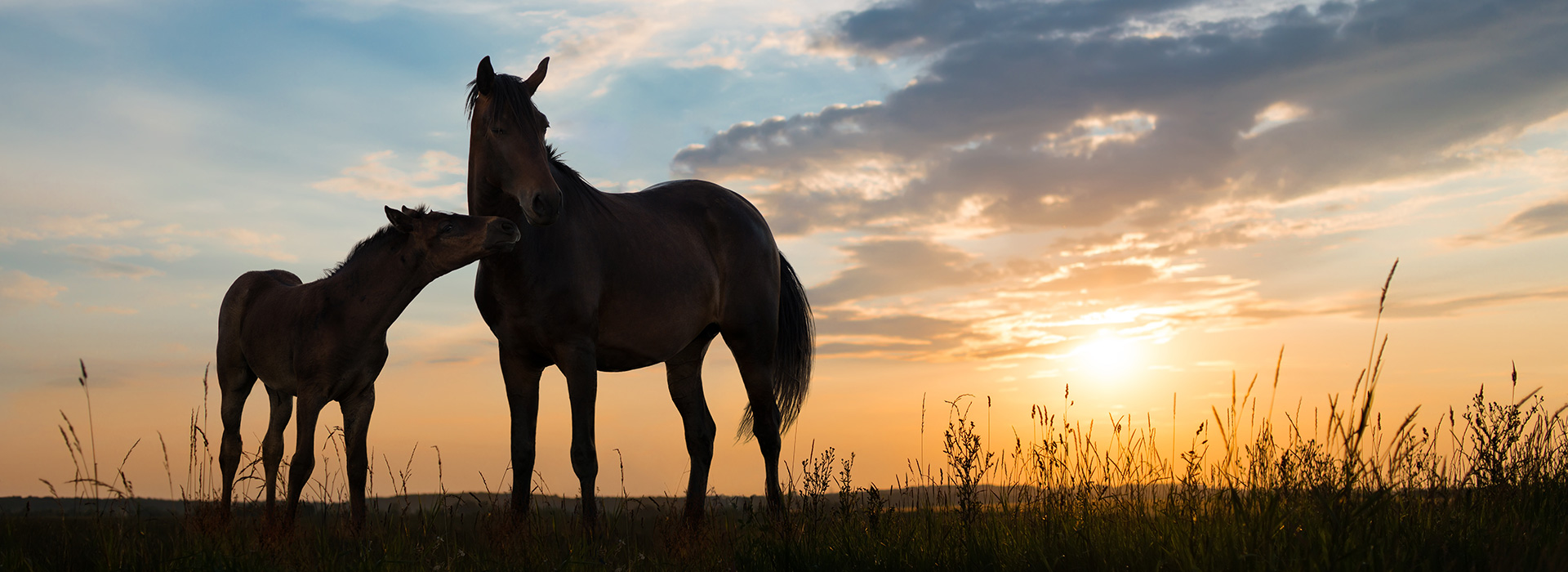While a lot of discussions focus on horses that can’t eat grain in their diet, very few focus on the benefits of grains in the horse’s diet.
In particular, maize often has a bad reputation in the horse industry and many horse owners avoid its use altogether, but is this necessary?
Cereal grains such as maize, oats and barley actually form a valuable component of many horse rations. For example, maize provides a good source of Vitamin A (needed for good eyesight and formation of tissues), Oats have good levels of fibre and Barley can aid with adding condition on your horse. These grains, however, are more commonly included in horse feeds primarily to provide energy in the form of starch.
Starch is an important component in horse feeds, but an excess of starch can lead to obesity, over excitability and metabolic problems. For horses with conditions such as Insulin Resistance, Laminitis or Tying up, grains should be avoided. However, for horses without such conditions, grain starch is useful for providing everyday energy.
In order to fully understand how grains, such as maize, can be beneficial we need to look at three factors: how much starch cereal grains provide; how they are digested; and how they are processed.
How much starch do cereal grains provide?
All grains contain a varying amount of starch. For example, oats have the lowest starch level at about 40 – 45 %, barley has an intermediate starch level at about 50 – 55%, and maize has the highest starch level at about 70-75% which also means that maize provides the most energy. This fact has often led to people removing maize from the diet as they are fearful of making their horse “hot”.However, when problems do arise in horses which are fed maize, this is rather as a result of the amount that has been fed not the maize itself.
Maize is more energy dense than oats. This means that in equal volumes of maize and oats, the maize will provide much more energy than the oats. Many of the problems we see are because these horses are fed a direct scoop for scoop substitution of maize for oats, which leads to overfeeding. When equal amounts of energy are fed, feeding maize does not increase the risk of obesity or make a horse hotter than one fed oats or barley.
How are grains digested?
When considering the amount of starch in cereal grains, it is important to look also at the form of starch in that particular grain. Different starch structures play a significant role in the digestibility of starch. The portion of the horse’s digestive tract that includes the stomach and small intestine is known as the foregut. This area is designed to process grains and enables the horse to utilize their full nutritional value.
The general rule of thumb is that the more digestible the starch, the safer it is for the horse and the lower the risk of metabolic problems. Oats have a form of starch that is readily digested in the horse’s foregut. The starches found in maize and barley, however, are not readily digestible in the horse’s foregut and therefore have a higher risk of passing undigested into the horse’s hindgut where they could potentially cause problems such as colic or laminitis. Studies have shown that feeding no more than 2kg of a concentrate feed per meal (this is your bucket or grain feed- hay and grazing is not applicable to this restriction) will reduce the risk of grain overload into the horse’s hindgut.
Knowing that maize has a higher starch content than oats -and that maize starch is also less digestible – it is easy to understand why many wish to avoid it. However, the grain processing must still be taken into account.
How are grains processed?
There are many ways in which grains may be processed such as rolling, crushing or grinding and these methods were initially all thought to increase the digestibility of grains. However, it has now been shown that these processes only change the physical structure of the grain, breaking the seed coat and reducing the grain’s particle size to give the enzymes better access to the starch within the centre of the grain. This results in only a small improvement to the digestion of the starch.
This is more than sufficient for grains such as oats, as they are a larger grain, which the horse is capable of chewing enough to break its seed coat, removing the need for physical processing. As mentioned previously, oat starch is far easier to digest than maize or barley starch in an uncooked form, thus oats can be fed whole and uncooked. However, whether oats can be fed in this way needs to be ascertained individually for each horse.
Where maize or barley is concerned, studies have indicated that when cooked, the starch digestibility increases dramatically to about 90%, which then makes maize a safe grain to feed compared to their raw forms. When grains are cooked the structure of the starch granule is opened making it a more vulnerable structure which can be easily attacked by enzymes in a process known as gelatinisation. Cooking simply gives the horse’s enzymes access to the grain starch so they can go about their work of cutting up the starch into single glucose molecules which the horse then absorbs from the small intestine into the body where it is used for energy. The most common forms of cooking are extrusion, which uses a combination of heat and pressure, and micronisation which heats and vibrates the starch molecule.
Conclusion
Although moderation and some caution is needed when feeding grains, there is no reason why they cannot be used in horse feeds. For horses with medical conditions, grains should be avoided as much as possible but for the average horse, as long as they are fed in the correct amounts and when necessary are processed to aid in starch digestibility, they can actually be a nutritious, healthy addition to your horse feed.
Picture from http://unictrading.com/wp-content/uploads/2014/04/grains66.jpg




